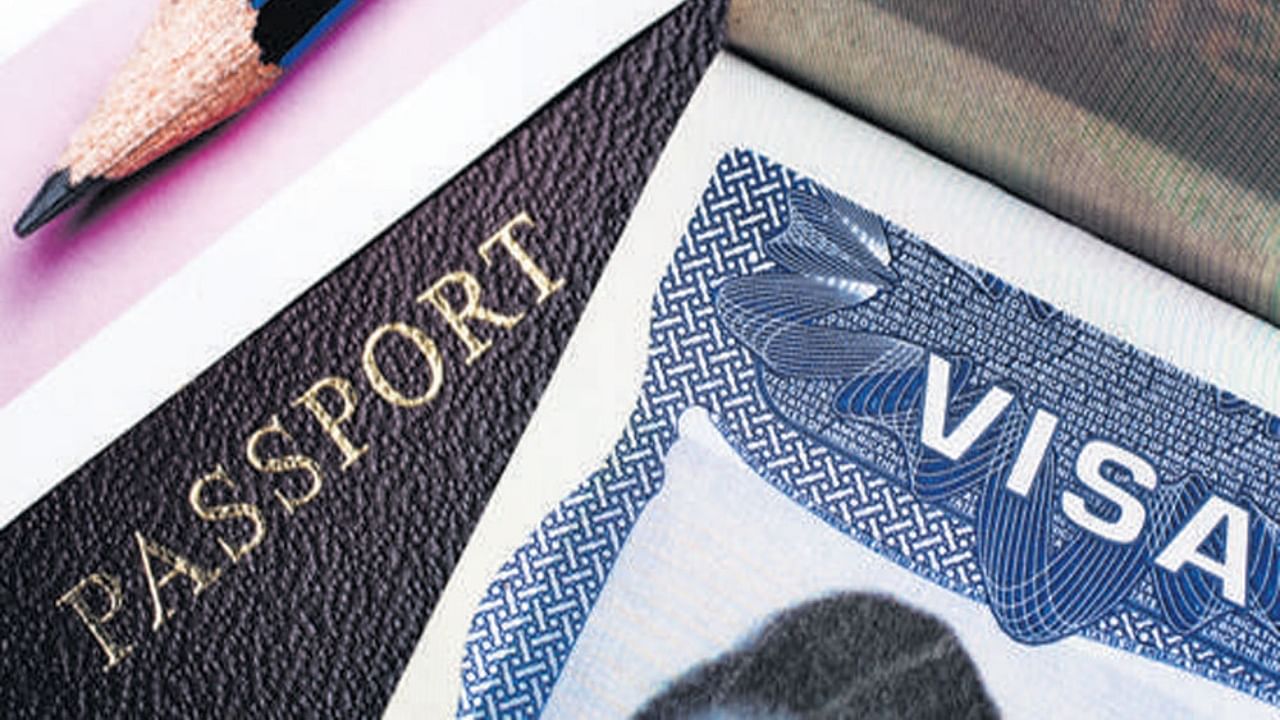
Representative image of a visa.
Credit: iStock Photo
New Delhi: India should seek easy visa norms in bilateral agreements with different countries for its semi and unskilled workers as it would help increase flow of remittances, and higher wages to labourers, trade experts said.
They said easy visa norms will also help contain illegal entry of Indian labourers into developed and rich nations.
Normally in a free trade agreement, two trading partners seek greater market access for its skilled professionals. India, too, asks for easy provisions for its IT and other skilled workforce.
"Now, India should start talking for its semi and unskilled workforce also in the proposed free trade agreements. We should take this as a binding commitment. It will help stop illegal entry of labourers from India into developed nations. India provides low customs in trade agreements, so in lieu of that we can seek greater access for our labours", international trade expert Biswajit Dhar said.
He said that wages in other countries, particularly developed, are high and Indian laborers from sectors like agriculture and mechanical would get advantage from that.
"We have so many unskilled and semi-skilled labourers in India. Easy visa norms for them will also help India get huge remittances", Dhar added.
India has received over $111 billion in remittances in 2022, the largest in the world, becoming the first country to reach and surpass the $100-billion mark, the United Nations migration agency has said.
According to the report's data, India was the top country receiving remittances in 2010 ($53.48 billion), 2015 ($68.91 billion), and 2020 ($83.15 billion), with the remittances crossing the $100-billion mark to reach $111.22 billion in 2022.
Three countries in Southern Asia - India, Pakistan and Bangladesh - rank among the top-ten recipients of international remittances in the world, underscoring the significance of labour migration from the subregion.
Inflow of remittances has a positive impact on the balance of payments of the country.
Economic think tank Global Trade Research Initiative (GTRI) Founder Ajay Srivastava said it will be hard for India to get access for semi-skilled and unskilled workers in partner countries through FTA negotiations and the most effective strategy is to negotiate bilateral agreements with individual countries to secure access for unskilled workers.
"Bilateral talks based on each country's needs are more effective. India's labourers and unskilled workers going to the Gulf are the best example of this approach", Srivastava said.
While access for skilled professionals is negotiated through the Mode-IV services provisions of FTAs (free trade agreements), access for semi-skilled and unskilled workers is generally handled through bilateral agreements, he said.
Srivastava added that given the tough employment conditions globally, it is challenging to secure commitments from FTA partners to admit skilled or unskilled professionals.
"India is also cautious about granting reciprocal access. The most effective strategy is to negotiate bilateral agreements with individual countries to secure access for unskilled workers."
"This approach addresses the complex dynamics of global labour markets and ensures that both parties can manage their employment needs and economic priorities effectively", he added.
Securing access for its professionals, technicians, and other skilled workers into the partner country markets on short term assignments remains one of the top priorities for India in FTA negotiation.
However, Srivastava said most countries are reluctant to allow access.
"Thus, while India's FTAs with Japan, Korea, ASEAN, Singapore, UAE, and Australia, contain provisions facilitating entry for skilled professionals, this access comes with many restrictions like labour market test, certification requirements, long duration in visa processing or local language proficiency requirement. There is no data on how many Indian professionals have benefited from these provisions", he said.
He added that India's FTAs with the UAE, Malaysia, and Japan include general provisions on labour mobility, potentially allowing access for semi-skilled and unskilled workers. However, these FTAs typically lack explicit details on the number of semi-skilled and unskilled workers allowed or specific visa quotas.
Implementing these provisions requires negotiation and cooperation between governments and industries, focusing on mutual benefits and addressing specific sectoral needs.
Generally entry for semi-skilled and unskilled workers in the partner country is handled through bilateral agreements rather than within the FTAs themselves. Gulf and Southeast Asian countries often use such agreements to facilitate the entry of Indian workers of various skill levels, he said.
Srivastava added that almost all countries are hesitant to grant access to foreign skilled or unskilled workers as they worry that increased access for foreign workers could displace domestic workers or put downward pressure on wages.